Background
I have a device with a NiMH battery. This is a portable device, so I need to know how much battery I have left at all times.
To achieve this, I want to map the battery voltage to a percentage between 0% and 100%.
Characteristics
The battery I am dealing with gives me the following information (printed in the device):
NiMH Battery 7.2V, 400mAh
Manual Information:
Battery voltage V: 6 ~ 10
Nominal capacity (mAh): >=400
Power(Wh): 2.4-4
Charging temperature (Celcius): 0 - 45
Research
I have read some articles indicating that this is possible, but unfortunately I have not found the mathematical formula they used ( page 6 of 14 ):
http://data.energizer.com/pdfs/nickelmetalhydride_appman.pdf
Problem
What is the algorithm that, given the current voltage of the battery, can tell me how much % I have left?
